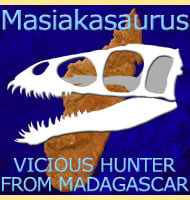Klobiodon
In Depth Klobiodon is a genus of rhamphorhynchid pterosaur that lived in Europe during the mid Jurassic. Klobiodon was large for the type of pterosaur it was, and was probably a hunter of fish. Further Reading - Pterosauria of the Great Oolite Group (Bathonian, Middle Jurassic) of Oxfordshire and Gloucestershire, England. - Acta Palaeontologica Polonica. … Read more
